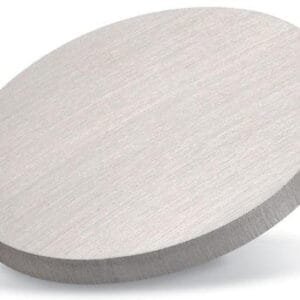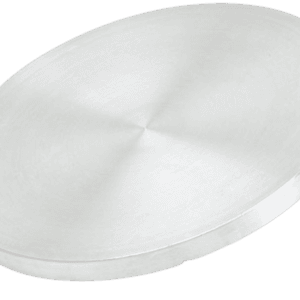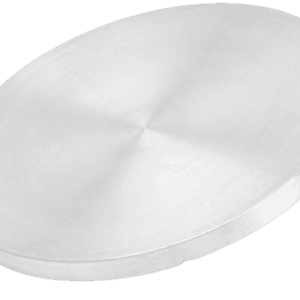Cobalt Iron Manganese Germanium Sputtering Target
Introduction
The Cobalt Iron Manganese Germanium Sputtering Target (Co-Fe-Mn-Ge) is a multi-element alloy material engineered for advanced thin film deposition. Belonging to the family of Heusler-type alloys, this compound is particularly valued in spintronics, magneto-electronic devices, and emerging semiconductor applications due to its tunable electronic structure and half-metallic behavior. Its precise composition allows researchers to manipulate magnetic ordering and electronic band gaps, opening pathways to next-generation functional films.
Detailed Description
Cobalt Iron Manganese Germanium alloys are often designed in stoichiometric ratios such as CoFeMnGe, forming a quaternary Heusler alloy with potential half-metallic ferromagnetism. As a sputtering target, the material is manufactured with:
High Purity (99.9% – 99.99%): Minimizes contamination, crucial for high-quality thin films.
High Density & Uniform Microstructure: Ensures consistent sputtering rates and film composition.
Custom Sizes: Available as discs, plates, rectangular targets, and step targets.
Optional Bonding: Copper or titanium backing plates for enhanced heat dissipation during magnetron sputtering.
Its combination of transition metals (Co, Fe, Mn) with germanium enables unique magnetic and electronic properties compared to binary or ternary alloys, making it a versatile material for R&D and industrial coating technologies.
Applications
Spintronics: Magnetic tunnel junctions (MTJs), spin valves, and spin-transfer torque devices.
Semiconductors: Integration with CMOS platforms for magneto-electronic components.
Magneto-optical Devices: Thin films for sensors and optical modulators.
R&D: Fundamental studies on quaternary Heusler alloys, half-metallicity, and thermoelectric behavior.
Technical Parameters
| Parameter | Typical Value / Range | Importance |
|---|---|---|
| Purity | 99.9% – 99.99% | Ensures low contamination in thin films |
| Composition | CoFeMnGe (customizable) | Enables tunable electronic and magnetic properties |
| Diameter | 25 – 300 mm (custom) | Fits various sputtering systems |
| Thickness | 3 – 6 mm | Determines sputtering rate & uniformity |
| Bonding | Copper / Titanium backing | Improves thermal management & mechanical stability |
Comparison with Related Materials
| Material | Key Advantage | Typical Application |
|---|---|---|
| Cobalt Iron Manganese Germanium (CoFeMnGe) | Quaternary Heusler alloy, tunable properties | Spintronics & semiconductor R&D |
| Cobalt Manganese Gallium (CoMnGa) | Half-metallic ferromagnetism | MTJs, magnetic coatings |
| Nickel Manganese Gallium (NiMnGa) | Shape memory & magnetostriction | Actuators, sensors |
| Cobalt Iron Aluminum (Co₂FeAl) | Stronger ferromagnetism | Magnetic recording |
FAQ
| Question | Answer |
|---|---|
| Can the target be supplied in different compositions? | Yes, Co, Fe, Mn, and Ge ratios can be tailored for specific research purposes. |
| Is bonding necessary for all targets? | Recommended for large or high-power applications to prevent cracking. |
| How is it packaged? | Vacuum-sealed, with foam protection inside export-grade cartons or wooden crates. |
| Which industries use this target? | Mainly in semiconductor, spintronics, optics, and R&D institutes. |
| What sputtering methods are supported? | Compatible with RF/DC magnetron sputtering and other PVD systems. |
Packaging
Each Cobalt Iron Manganese Germanium Sputtering Target is individually vacuum-sealed, clearly labeled, and packed with foam padding in secure export cartons or wooden crates. This ensures maximum protection during storage and transport.
Conclusion
The Cobalt Iron Manganese Germanium Sputtering Target is a high-performance alloy designed for advanced thin film applications where precision and reliability are paramount. Its quaternary Heusler structure makes it an exciting choice for spintronics and semiconductor R&D.
For detailed specifications and a quotation, please contact us at [sales@thinfilmmaterials.com].





Reviews
There are no reviews yet.